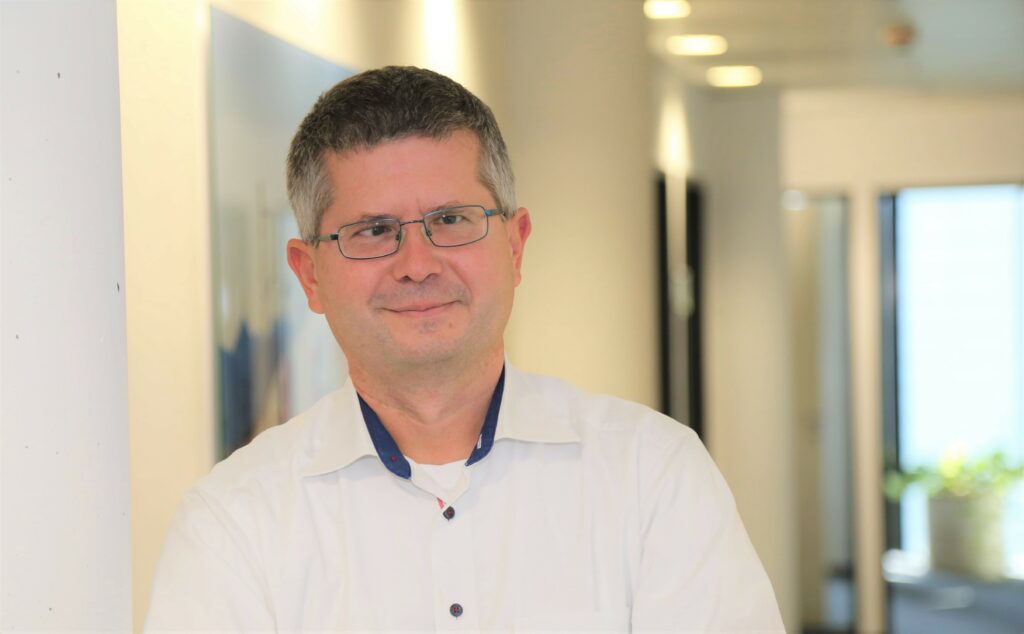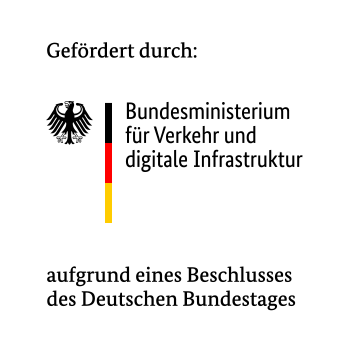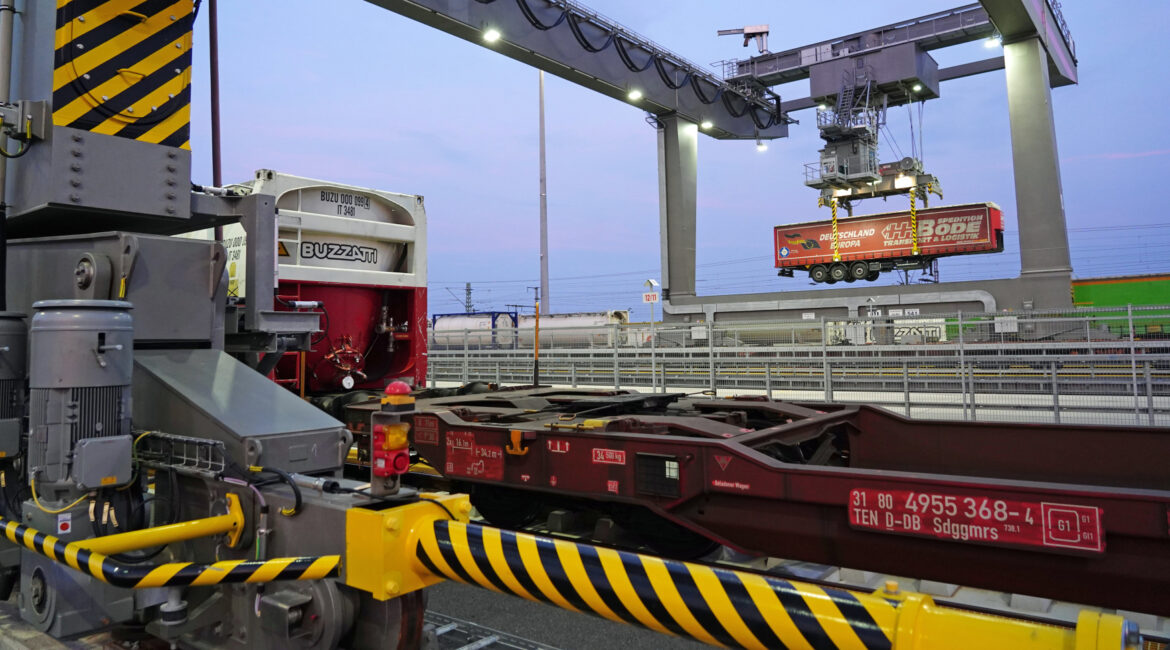The rapid-transfer facility is operating normally and is becoming a vital hub in the network of Kombiverkehr and DB Cargo
Lübeck, Duisburg, Ludwigshafen, München, Verona: intermodal specialist Kombiverkehr and DB Cargo launched the MegaHub Lehrte project with these routes. The clincher: all connected terminals are linked to each other via the MegaHub. The connections are scheduled so that trains will arrive between 8 in the evening and 6 in the morning and be laid up only briefly. And not only will the next stage of expansion from September 2021 increase the frequency of services, it will also add more destinations.
MegaHub as a blueprint for logistics projects
Now that the MegaHub has been operating normally for several months, we are already looking ahead. Ulrich Bedacht, Manager North European Transport & German Baltic Sea Ports at Kombiverkehr, is confident: “The MegaHub is definitely a flagship project for other locations which still have no terminal to connect the region – it can be a logistical blueprint for the whole of Germany as it were.” And Dieter Brinckmann, Key Account Management Kombiverkehr Carrier Sales Intermodal at DB Cargo, is certain about what he hopes to have achieved with the MegaHub by the time he retires in two years: “Together with Kombiverkehr we will increase the number of trains in stages. This process calls for us to paint an accurate picture of customer requirements and demand, as well as the corresponding freight flows. And our MegaHub strategy will cover even more of Europe, with connections between east, west, north and south.”
“Together with Kombiverkehr we will increase the number of trains in stages.”
Dieter Brinckmann, Key Account Management Kombiverkehr Carrier Sales Intermodal at DB Cargo

The big advantage of the facility in Lehrte is the fact that the hub has an entry and and an exit for the trains. Conventional terminals are usually designed as terminus stations. Lehrte is different in the sense that trains arrive and leave without a change of locomotive – and speed is of the essence in a facility such as this. Timetable schedules mean that it is quite normal for trains to be laid up for 12 hours in conventional terminal gateway transhipment, whereas it usually takes under three hours to “switch freight” from train to train at MegaHub Lehrte – two-thirds less in other words. “Our MegaHub is really successful because we have mastered the complex interplay of timetable, traction, line and terminal in such a way as to minimise the waiting times for trains arriving at the transfer facility. It’s a real challenge,” admits Dieter Brinckmann.
“We benefit in two ways: firstly from short first and final legs, and secondly from the rapid hub function for long-distance international shipments.”
Moritz Ostermann, General Manager Ostermann Transporte GmbH
Ostermann Transporte: Short first and final legs between loading points
According to Moritz Ostermann, managing director of Ostermann Transporte GmbH: “Ostermann Transporte GmbH have specialised for decades in the transport of liquid cargoes in Europe and we have also been using intermodal transport for a number of years. In recent months this has included shipments handled at the MegaHub in Hanover. We benefit in two ways: firstly from short first and final legs between our loading points in the Weserbergland region and Lehrte, and secondly from the rapid hub function for our long-distance international shipments to Austria and Italy. We have been closely involved with the development of the new facility from the start: communication is improving all the time, the throughput times are closely attuned and the opening times are convenient. We hope to see more terminals connected to Lehrte over the coming months. Since Lehrte defines itself very strongly by speed in its capacity as a location in the bundling of freight flows from many different directions, the aim should always be to set this speed as a standard in the daily processing of transport units during delivery and acceptance and to improve even further in this area. We are happy to use the facility and the new intermodal services provided by Kombiverkehr today and we look forward to further growth locally.”
From Lehrte to the whole of Europe
Like all big ideas, it also took a while for the idea to mature of a rapid-transfer facility that handles incoming containers, semitrailers and swap bodies individually by crane before sending them to their destinations on freight trains. Ideas for a facility outside the gates of Hanover that handles freight centrally and quickly first emerged a long time ago. “The Combined Transport sector was growing really fast at the time and there was recognition that more needed to be done,” says Dieter Brinckmann, summing up the original thinking behind the project. “It was a very exciting project from the outset. I was able to get involved in it back then and I still am today,” says Dieter Brinckmann with evident enthusiasm for this large-scale project.”
It’s enjoyable to see that a project like this can work and watch it take off!”
Ulrich Bedacht, Sales, North European Transport & German Baltic Sea Ports at Kombiverkehr

Ulrich Bedacht, with Kombiverkehr for 30 years, admits: “It’s enjoyable to see that a project like this can work and watch it take off! Especially when you look back and it wasn’t always clear whether it would work. All it took in the end was for many people to pull together.”
Are you interested in climate-friendly transport solutions via MegaHub Lehrte? Your contact: Ulrich Bedacht, Sales, Manager North European Transport & German Baltic Sea Ports
Phone +49 69/79505-244 or ubedacht@kombiverkehr.de



Comments are closed.